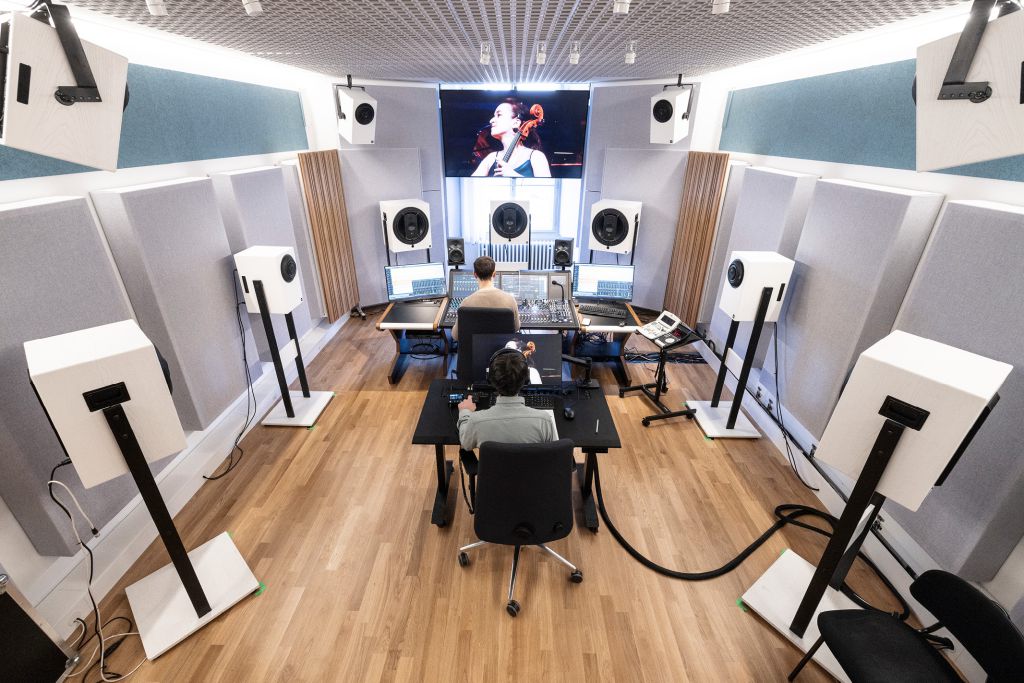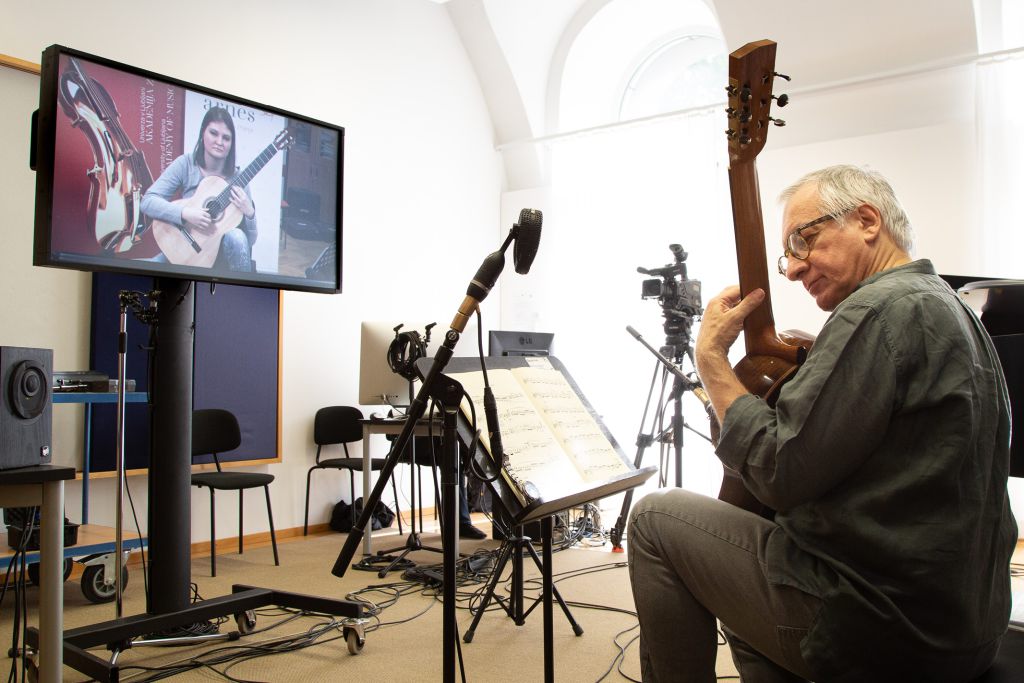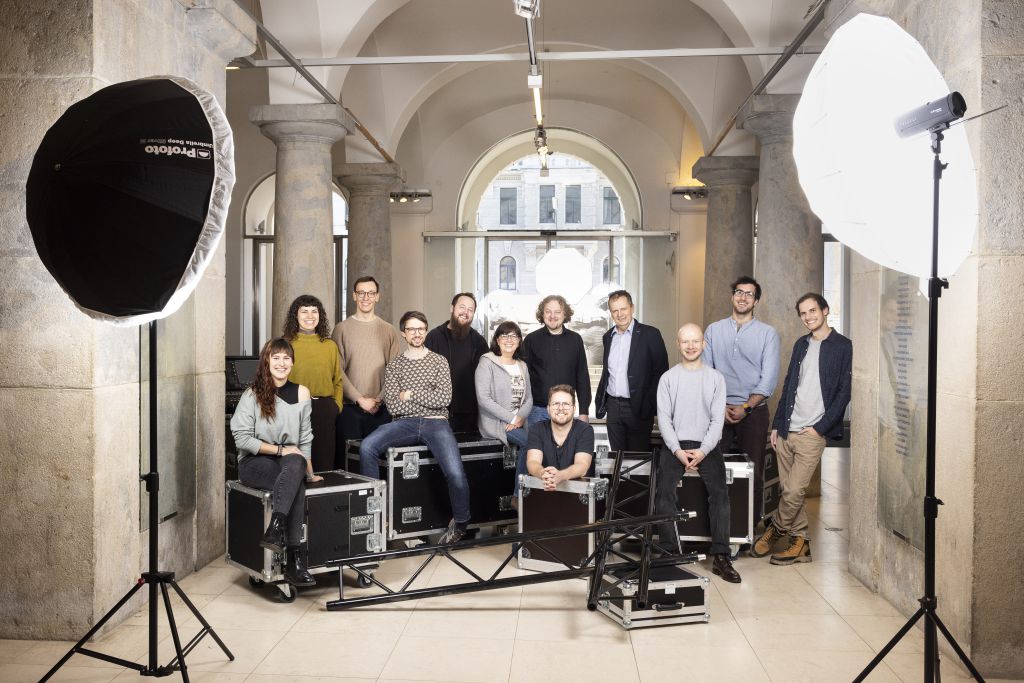Be it remote learning, hybrid instruction, live streaming, the recording of in connection with artistic diploma exams, or live sound at concerts: over the past ten years, the mdw’s Audio-Video Center (or AV Center for short) has become an essential part of our institution’s everyday life. Today, fifteen employees are responsible for the areas of “AV Streaming”, “AV Events”, and “AV Teaching”. “While each area has its own contact person, the comprehensive skills and knowledge possessed by all of our employees make for lots of flexibility and mutual support,” says AV Center head Thomas Lang on the structure of his team. “It was with streaming and live sound that we first began. We’ve since seen rapid growth in these areas, while new focuses have also emerged.”

Ulrich Wagner was the AV Center’s first employee back when it was established in 2014, and he now heads a five-person team that takes care of live streaming and audio/video production. Since the autumn of 2023, a newly designed mdwMediathek has been up and running that features interesting and high-quality content ranging from artistic to educational and research-focused. “In our AV productions, the artistic aspect is always front and centre. Whether it be lighting, capturing audio, camera work, or video directing: while mastery of AV technology is essential, it’s always just a tool whose sole purpose is to support artistic performances and/or concepts. And the redesigned Mediathek, for its part, helps us to make our productions even more appealing and present them in a new light.” The growing number of mdw events has resulted in a commensurately greater need for AV support. Robert Hofmann, who leads the “AV Events” team, says that this development is due not least to the increasingly hybrid nature of activities. “Nearly all symposia these days are also held online. What’s more, our constant contact with the organisers of such events shows us just how much they value smooth collaboration with state-of-the-art technology and a professional team.”
I‘m for the expansion and enrichment of physically present instruction via the integration of remote and blended learning formats, always in addition to rather than as a replacement.
Barbara Strack-Hanisch, Vice Rector for Academic Affairs
A new area that has emerged and grown quite rapidly over the past ten years is the broad category of AV Teaching. It encompasses hybrid instruction using purpose-developed AV workstations that enable courses to be held onsite and online simultaneously while also providing the audio-visual tools needed for remote individual artistic instruction. Since the COVID-19 pandemic, the AV Center has also been working on high-quality “digital lecture hall” solutions. “Ever since our concepts for digital teaching began seeing wide use during the pandemic, we’ve been building on the additional knowledge derived from this in order to further develop and sustainably establish digital teaching at the mdw,” states Joseph Mittermeier, head of the AV Teaching team. The focus here, says Mittermeier, is on musical and artistic exchange and on high quality—as well as on accessibility with an eye to improving students’ ability to study. “We expect that in the future, international exchange will likewise profit from the knowledge that’s been gained.”

In the context of remote learning, the employed technology opens up new channels of artistic exchange and hence numerous international projects and cooperative initiatives—such as the “global lecture hall” of the Global Conservatoire. This innovative project, which is run in cooperation with the Manhattan School of Music, London’s Royal College of Music, the Conservatorium van Amsterdam, and the Royal Danish Conservatory in Copenhagen, offers a digital course structure at the highest level and thereby encourages international networking. The initial steps in digital teaching were taken with LoLa, an audio-visual streaming system that offers high-quality, low-latency transmission in real time. LoLa remains the most-used element in this context today. “This type of transmission works so well that the teachers almost forget they’re not in the same room as the students,” says Thomas Lang on the user feedback he’s received. In the future, remote learning is to be further expanded with still-greater ease of use. “We’d really like to standardise it all to the point where teachers can take care of the technical aspects themselves,” says Lang in explanation of the next steps.

For the present year, the plan is to carry out an intriguing large-scale project funded by the City of Vienna: a newly developed active room acoustics system that offers real-time portrayal of the most varied spaces’ sounds and related characteristics. This new system, to be used in the Sound Theatre of the Future Art Lab, will facilitate not only music-making in the most varied concert hall acoustics but also practical recording and live sound experiences in representations of rooms that are unavailable due to their sheer size.

